 |
|||
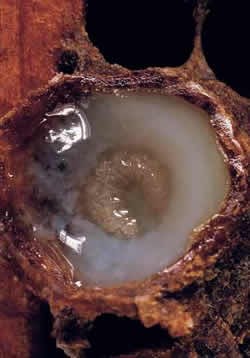 The
queen is the center of the bee colony. Her presence ensures momentum in the bees’ work and, by laying many eggs, the queen also ensures a strong colony. The queen secretes pheromones, known as “queen substance,” which create some sort of harmony between all the members of the colony, making them function as a whole. The
queen is the center of the bee colony. Her presence ensures momentum in the bees’ work and, by laying many eggs, the queen also ensures a strong colony. The queen secretes pheromones, known as “queen substance,” which create some sort of harmony between all the members of the colony, making them function as a whole.Beekeepers devote the greatest attention to queens because they know well that queens are essential for good beekeeping. One guarantee of success is a young, fertile queen that has all-around good characteristics. If the queen, for one reason or another, does not fit the bill, she must be replaced. Beekeepers often decide to buy young queens from queen breeders. One often hears criticism from beekeepers that queens bought from breeders are unsatisfactory. The reason for this is simple: the percentage of queens not accepted by colonies and destroyed is all too high, and it happens all too often that colonies supersede introduced queens. Harsh criticism is unpleasant and damaging for the breeders, so a discussion of its validity seems fitting. Before making such allegations, beekeepers would be wise to ask whether they are the cause of the failure by introducing or replacing queens incorrectly. The introduction or replacement of queens requires beekeepers to have extensive practical knowledge and a firm grounding in bee biology. Good to Know 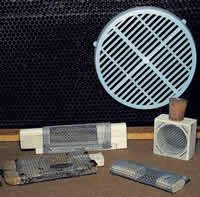 • The
queen’s scent – Beekeepers frequently discuss what they should
apply to a queen before introducing her to a colony, so her scent will match that of the colony she is being introduced into. Those in the know claim that worker bees do not recognize the queen by scent and that any scent matching is therefore meaningless. They believe that successful introduction of queens fundamentally depends on the queen’s behavior as well as conditions at the introduction and during her release from the queen cage. • The
queen’s scent – Beekeepers frequently discuss what they should
apply to a queen before introducing her to a colony, so her scent will match that of the colony she is being introduced into. Those in the know claim that worker bees do not recognize the queen by scent and that any scent matching is therefore meaningless. They believe that successful introduction of queens fundamentally depends on the queen’s behavior as well as conditions at the introduction and during her release from the queen cage.• The queen’s behavior – Newly hatched queens are very lively and move quickly about the combs, as if agitated. After mating, they remain in this state for quite a while. We can see this for ourselves by opening the mating nuc in which the queen is already laying eggs (taking care not to let her fly away). The more eggs she lays, the more she calms down, finally calming down completely when encircled by her progeny. The queen matures in about four to five weeks. Because breeders cannot keep her in the nuc for so long, they take her out after only a few days of laying, when she is not quite mature yet. The buyer must bear this in mind and act accordingly. • The queen’s fertility – Carniolan queens are fertile for at least four years, sometimes for much longer. However, they are at their peak during the first two years. Consequently, most beekeepers do not like older queens in their hives and, if possible, replace them every two years. • Weather conditions and forage – Weather conditions are important when introducing queens and during their release from the queen cage. Success is guaranteed if it is balmy and if there is at least some forage outside. Otherwise, the colony slated to receive the queen must be given sugar syrup a day early and the feeding must continue even after the queen has already been released from the cell. When faced with cold, windy weather and no forage, it is better to delay the introduction of the queen. 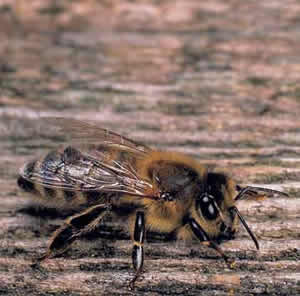 • The
state of the colony receiving the new queen – The colony about
to receive a queen must definitely be queenless and without any queen cells with eggs. The colony chosen to receive a new queen is known to be queenless when beekeepers remove the old one themselves. Likewise, a nucleus made using one of the recognized methods contains no queen. If there is any doubt that the colony is indeed queenless, it must be checked. To do this, a comb with at least a few eggs or young larvae is taken from one of the colonies, marked with a tack, and inserted into the center of the brood chamber of the colony being tested for the presence of the queen. Of course, this is after removing the corresponding comb from this colony as well. • The
state of the colony receiving the new queen – The colony about
to receive a queen must definitely be queenless and without any queen cells with eggs. The colony chosen to receive a new queen is known to be queenless when beekeepers remove the old one themselves. Likewise, a nucleus made using one of the recognized methods contains no queen. If there is any doubt that the colony is indeed queenless, it must be checked. To do this, a comb with at least a few eggs or young larvae is taken from one of the colonies, marked with a tack, and inserted into the center of the brood chamber of the colony being tested for the presence of the queen. Of course, this is after removing the corresponding comb from this colony as well.After a few days the inserted comb with the brood is checked. If the queen cells have been drawn, the colony does not have a queen and one can be safely introduced. The queen cells are destroyed, but the comb is not put back in. Usually, it is returned to the colony where it was taken from in the first place. • Bee age – The age of the bees in the colony into which a new queen will be introduced is very important. Old bees are not very friendly toward the queen, so the blame for potential rejection in the colony falls on them. It is therefore difficult to successfully introduce new queens into colonies that have gone without one a long time, or in which laying workers have developed. The reason for this unfriendliness is quite simple. The old worker bees’ hypopharyngeal glands – that is, the glands producing the food source called “royal jelly” to feed the queen – stop functioning. In layman’s terms, one would say that they are no longer interested in a queen, whereas young worker bees wish to deposit this food as quickly as possible. Thus, it is important that the queen be placed among younger worker bees. It is important to note that smaller colonies accept an introduced young queen much more easily than large colonies in productive hives. • Seasons – When introducing or replacing new queens, the season is also important. Queens are introduced to queenless colonies and nuclei when necessary. Requeening in productive hives is different because the decision of when to do it is up to the beekeeper. Some beekeepers rigorously advocate spring requeening. They evaluate the queen’s quality at the first inspection. If it is inadequate, they replace her, regardless of age. If the colony is weak, they introduce an entire nucleus together with the queen. 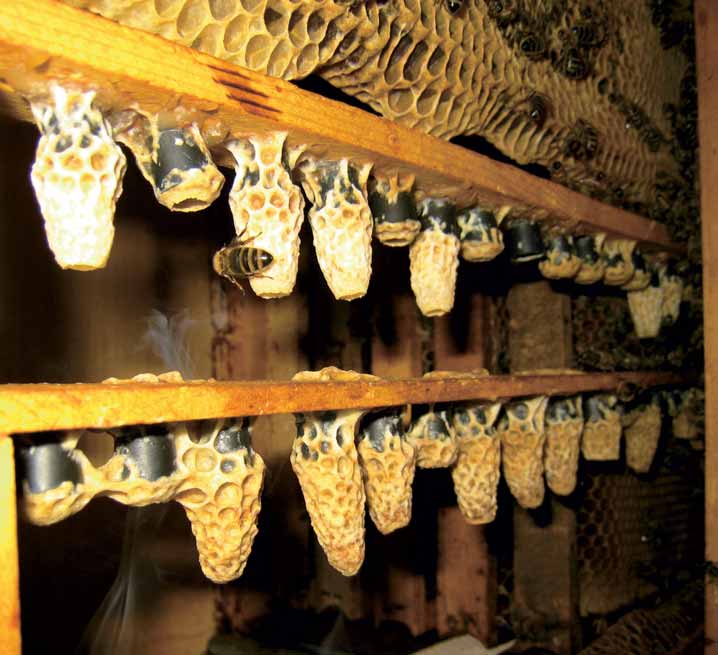 • This kind of requeening demands careful planning. Small colonies or nuclei in which young queens over-winter must be prepared during the previous season. In spring, they are gladly welcomed by any colony and, because the introduced queens have already matured, their acceptance is all the more certain. It should be mentioned here that a beekeeper must have a larger number of small back-up colonies. When introducing a new queen into a productive colony in spring, he or she does not destroy the old one, but places it in a nuc. There, the old queen continues laying eggs, the beekeeper removes these combs, and in the summer replaces her with a younger queen that over-winters there and is once more available in spring. It is important to note that one should keep an eye out for varroatosis because laying in the colony has not been interrupted. Introducing and Replacing Queens 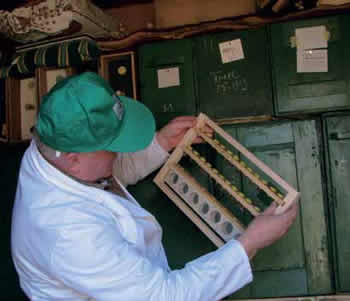 Queens are introduced or replaced in several ways: Queens are introduced or replaced in several ways:1. Queen cells – A ripe queen cell, in which the queen is already biting, is gladly accepted by any queenless colony. It is even accepted by a queenright colony. However, in a way, the queen cell is always a pig in a poke. There is no way of knowing what kind of young queen it contains and whether she is damaged. There is also the uncertain issue of the nuptial flight because the queen might get lost in the process. Thus, queen cells are mostly used with mating nucs, in which queen selection is still possible later on. 2. Virgin queens – The colony accepts them more reluctantly, usually only when there is capped brood in the hive. They more easily accept a newly-hatched queen. Beekeepers usually opt to introduce virgin queens when they want the colony to stop laying for a while. They regularly use them in mating nucs. If one lacks the necessary skills, it is better to let queen breeders handle virgin queens. 3. Mated queens – This is the most frequent practice among beekeepers. One needs to make sure that all conditions are met within a queenless colony before introducing the queen. Methods of Introducing Queens a) Direct introduction – The queen is introduced directly among the bees, usually in the spot where the old one was removed. This method, especially in spring, is quite reliable if one introduces a mature queen that has been laying eggs for a longer period of time (and is thus in a similar state as the replaced queen) and if the procedure is carried out within all-around good conditions for the introduction. Some beekeepers remove the old queen and in time simply introduce a new one at the entrance. When doing this, they apply honey or sugar syrup to the queen. The worker bees cleaning the queen remove a few hairs from the queen in the process, thus making the queen seem older or less “fresh.” b) Indirect introduction – This is the method most often used. One uses the queen cage to test how the bees feel about the new queen and decide whether to release her or not. Various types of queen cages are used, their most important feature being that the stopper closing the exit (once it is determined that the bees are not hostile toward the queen) is replaced with bee candy or pasted over with comb foundation. In time, the worker bees free the queen themselves. Procedure for Queens Bought from a Queen Breeder 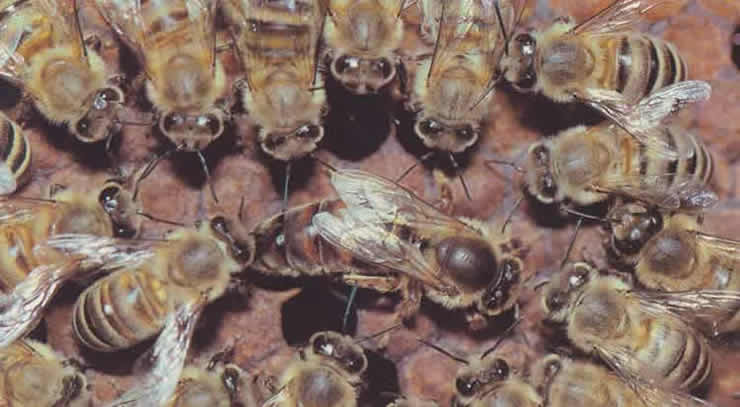 Because these queens are not properly mature yet and are often restless, their introduction into a queenless colony is often somewhat risky. Provided the weather is good, requeening is carried out by removing the old queen and introducing the new one in the queen-mailing cage. The cage is inserted so that the bees on the outside can reach the queen through the little openings or the wire mesh. One needs to look where the bee candy in the cage is and then open the cage on the opposite side from the queen, so that the bees gain access to the candy and, by eating through it, release the queen. 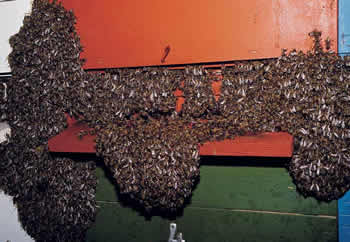 If the queen is being introduced into a queenless colony, the queen-mailing
cage is inserted between two brood combs. It is inserted in such a way as not to allow contact between the worker bees and the openings leading to the queen. The next day, the atmosphere in the colony is examined. If the worker bees throng around the queen cage, flap their wings, and are easily removed from the cage, they are allowed to access the bee candy and the hive is closed. However, if the bees are restless and are not easily removed from the queen cage, one should wait another day or two. If the next day brings no improvement, it is best to remove the cage with the queen and introduce a frame of uncapped brood to make sure the colony is indeed queenless. If the queen is being introduced into a queenless colony, the queen-mailing
cage is inserted between two brood combs. It is inserted in such a way as not to allow contact between the worker bees and the openings leading to the queen. The next day, the atmosphere in the colony is examined. If the worker bees throng around the queen cage, flap their wings, and are easily removed from the cage, they are allowed to access the bee candy and the hive is closed. However, if the bees are restless and are not easily removed from the queen cage, one should wait another day or two. If the next day brings no improvement, it is best to remove the cage with the queen and introduce a frame of uncapped brood to make sure the colony is indeed queenless.The queen will reliably be accepted if there are no old worker bees around. This can be achieved in several ways: • The queen is introduced into the colony through a mesh frame. The frame measures 10 × 10 cm and is covered by a wire mesh on one side, and the other side has tacks at the corners used to attach the frame to the combs. It is necessary to locate a comb with a hatching brood, remove all the bees from the center, drop the queen onto the brood, and quickly cover it with the frame. The queen is thus left alone with the hatching worker bees. These will clean the cells into which the queen will start laying eggs. After a few days, when the acceptance status is checked, the frame is removed. Often, the worker bees themselves make space under it and release the queen. Plastic round meshes can also be purchased and used instead of the mesh frame. • In nice weather, a nucleus can be made from several brood frames and bees brushed from one or two additional brood combs. The nucleus is moved a bit to the side. All the old bees will abandon it, allowing a new queen to be introduced by dusk. Liquid food is then added. 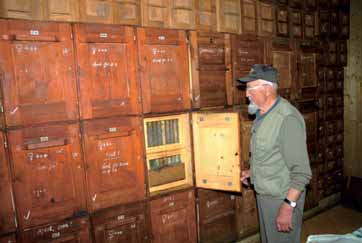 • With box hives with at least two supers and bees coming in only
through the entrance, the old bees can be removed quite easily. In balmy weather, one separates the upper super, which should contain a few frames of brood, from the lower one using a mesh frame, and opens up the round entrance on the super. If there is no entrance there, one must be provided on the mesh frame. The bees that fly out then return through the main entrance. By evening, all the old bees will have flown out and a new queen can be safely introduced. The bees in the lower super will feel its presence, so the confusion will not be great. The temporary colony in the upper super must receive liquid food. When the young queen’s brood is capped, the hive can be returned to its former structure. • With box hives with at least two supers and bees coming in only
through the entrance, the old bees can be removed quite easily. In balmy weather, one separates the upper super, which should contain a few frames of brood, from the lower one using a mesh frame, and opens up the round entrance on the super. If there is no entrance there, one must be provided on the mesh frame. The bees that fly out then return through the main entrance. By evening, all the old bees will have flown out and a new queen can be safely introduced. The bees in the lower super will feel its presence, so the confusion will not be great. The temporary colony in the upper super must receive liquid food. When the young queen’s brood is capped, the hive can be returned to its former structure.• It is also possible to temporarily remove old bees from AŽ hives. Cover the queen excluder and insert a few brood frames and enough bees into the honey chamber. Open the entrance to the chamber and around evening, when all the old bees have flown away, introduce the queen. The bees in the brood chamber are best kept busy with a comb of uncapped brood. When the brood of the young queen is capped in the honey chamber, join the colony together again. However, things can be simplified somewhat. Introduce some brood into the honey chamber and open the entrance to it, separating it from the brood chamber using a few rolls of paper. In the evening, introduce the queen, close the entrance to the honey chamber, and both parts of the colony slowly join together again. One must only take care that there is always enough liquid food in the brood and honey chambers. 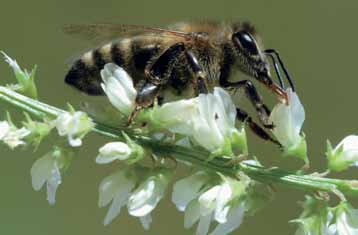 • Queens are introduced into a nuc and, when it is filled with a
few combs
of brood, it is moved to a productive queenless colony. • Queens are introduced into a nuc and, when it is filled with a
few combs
of brood, it is moved to a productive queenless colony. In an AŽ hive, the colony is put into a corner of the brood or honey chamber and separated from the brood chamber with newspaper. In box hives, the nuc is put into a new super at the top and separated from the lower one with newspaper. Both parts slowly join together and in a few days the hive can be appropriately arranged again. It is also possible to keep the nuclei over the winter and replace the queens early the next spring. Checking queen acceptance It is often recommended that one check the acceptance of the queens after three days. However, premature checking may cause a young queen to be destroyed. A new, nervous young queen is disturbed when not even larvae have hatched from the eggs. It is also possible that the queen will not start laying eggs right away. Beekeepers then find themselves standing over an opened hive without any brood and wondering what to do. It is therefore preferable to wait for over a week because when inspection time comes at least some of the brood will have been capped and the queen will be calmer. Nevertheless, if there is no brood, it will be clear what should be done. Janez Gregori |